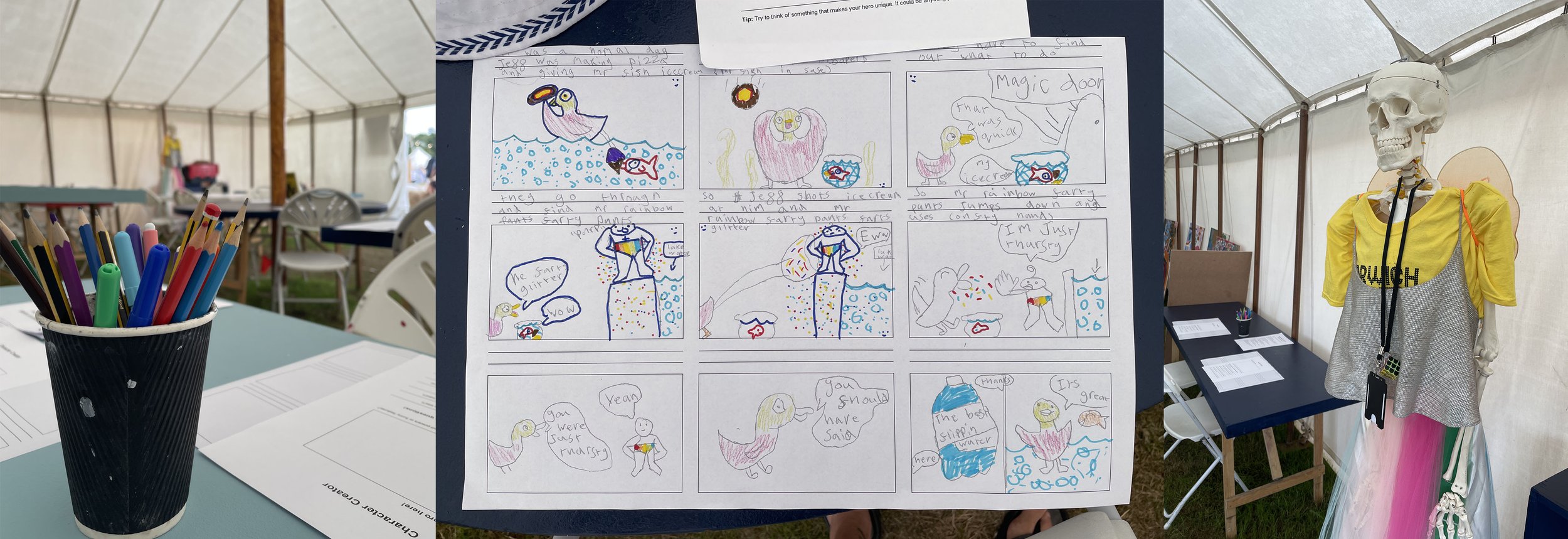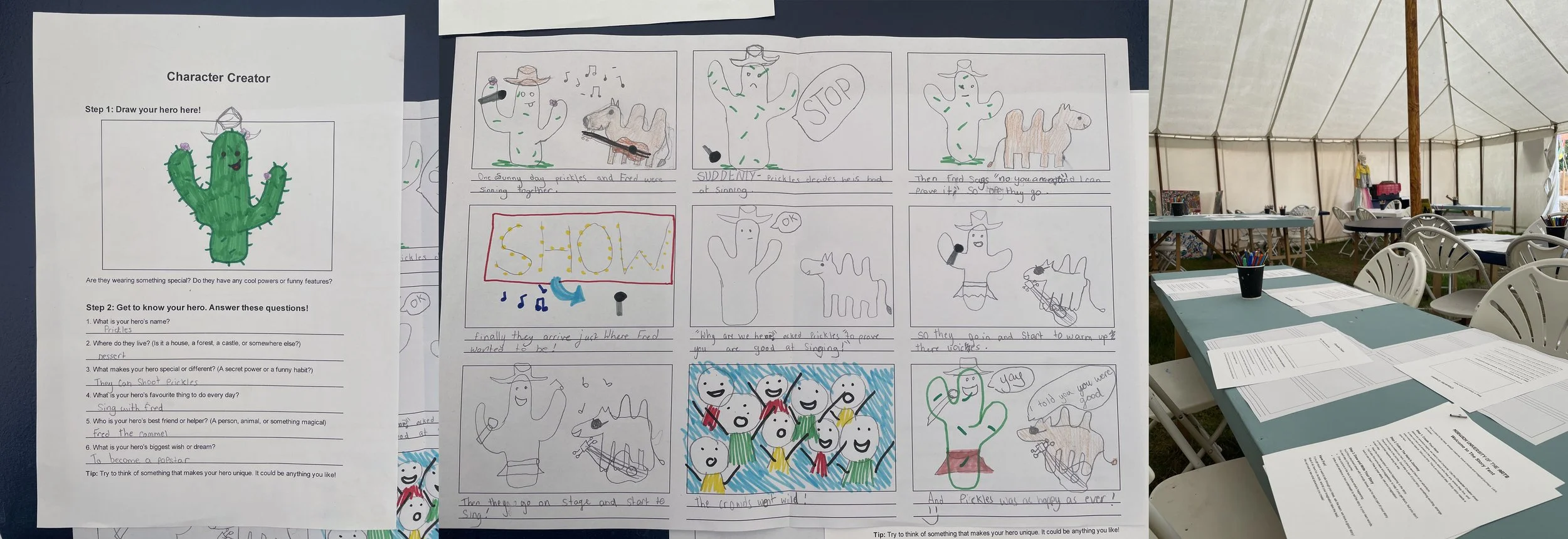Drawing the Hero’s Journey: Adventures in Story and Play
I just got back from Latitude Festival, where I had a great time running some storyboarding workshops as part of Norwich University of the Arts’ outreach programme. Set in the Enchanted Garden alongside workshops on life drawing and creating board games, our tent became a hub of imagination, colour and some pretty wild storytelling.
The aim of the workshops was simple: help participants create their own hero and then send that hero on an epic adventure. Behind that simplicity, though, was a narrative framework inspired by Joseph Campbell’s Hero’s Journey.
The Hero’s Journey (in Small Steps)
Campbell’s famous story arc was adapted into a set of nine story steps. Each step offered a short, child-friendly prompt and a space to draw a scene, allowing participants to build a complete story one panel at a time.
The structure was designed to be supportive rather than restrictive. For older children the prompts offered helpful direction and a sense of narrative shape. Younger children however often ignored the steps entirely, preferring to tell wild tales filled with non-sequitur ideas.
The Hero’s Journey acted as a quiet scaffold, offering just enough structure for those who wanted it while leaving plenty of space for imagination to run free.
Norwich University of the Arts storyboarding workshop, Latitude Festival, 2025
Critical Theory and Crayons
The idea of using Joseph Campbell’s work in a tent full of participants who still have their first set of teeth might sound a bit ambitious, but it worked well. The experience reminded me that big ideas become most meaningful when they are tangible and even playful.
Children don’t need to study mythic structure to understand what a hero is, or to feel the thrill of crossing into the unknown. These are patterns that resonate on an instinctive level. The workshop simply offered a way to explore them and those that chose to do so created stories that were narratively satisfying as well as imaginative.
Unexpected Companions
One of the really enjoyable parts of the workshop was seeing parents get involved. Some started out as quiet helpers, but many ended up creating stories of their own. Several families returned for multiple sessions, eager to continue where they left off or to start something entirely new.
This added an extra layer of energy and connection. The storytelling became something shared, a collaboration not just between children and facilitators, but between generations.
Norwich University of the Arts storyboarding workshop, Latitude Festival, 2025
Reflection and Next Steps
The workshop reinforced the value of offering just enough structure without getting in the way. The nine-step model worked well for most, but I’m already thinking about how it might be made even more accessible for younger participants, perhaps with fewer panels and even more simplified prompts.
The real highlight, though, was the sheer creativity on display. Whether following a classic journey or leaping between surreal ideas, every participant left with a hero and a story that was entirely their own. And that, in the end, was the ultimate aim: to make space for the joy of telling stories, and to trust the young participants to take them wherever they want to go.

